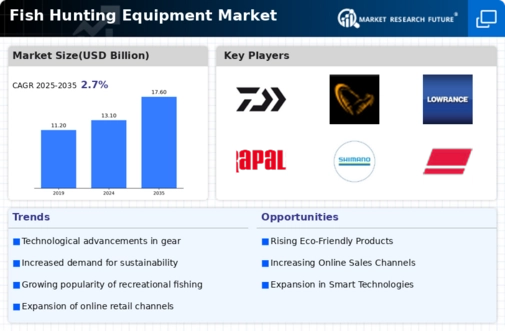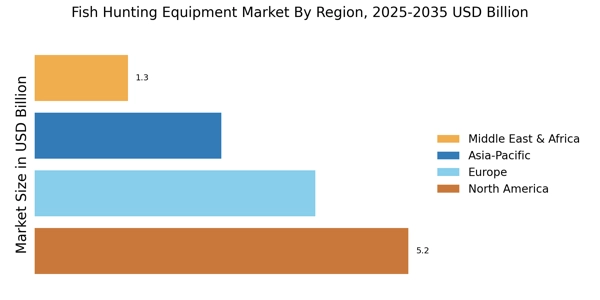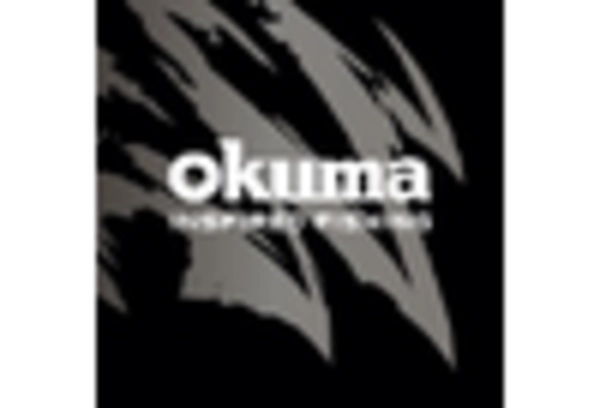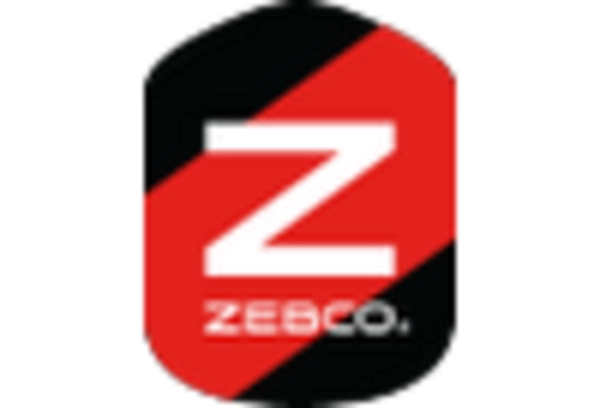Expansion of Fishing Tourism
The Fish Hunting Equipment Market benefits from the expansion of fishing tourism, which has gained traction in various regions. Destinations known for their fishing opportunities attract tourists seeking unique experiences, thereby increasing the demand for fishing gear. Reports suggest that fishing tourism contributes significantly to local economies, with expenditures on equipment, licenses, and guided tours. This trend not only boosts sales for local retailers but also encourages the development of specialized fishing equipment tailored for tourists. As fishing tourism continues to grow, the Fish Hunting Equipment Market is likely to capitalize on this trend, offering products that cater to both novice and experienced anglers visiting popular fishing locales.
Rise of Online Retail Platforms
The Fish Hunting Equipment Market is experiencing a transformation due to the rise of online retail platforms. E-commerce has made fishing gear more accessible to consumers, allowing them to compare products and prices conveniently. This shift has led to an increase in online sales, with data indicating that e-commerce sales in the fishing equipment sector have grown by 20% in the past year. The convenience of online shopping, coupled with the availability of customer reviews and detailed product information, enhances consumer confidence in purchasing decisions. As more consumers turn to online platforms for their fishing needs, the Fish Hunting Equipment Market is likely to adapt by enhancing its digital presence and optimizing supply chains to meet the growing demand.
Technological Innovations in Fishing Gear
Technological advancements play a pivotal role in shaping the Fish Hunting Equipment Market. Innovations such as smart fishing rods, sonar fish finders, and advanced bait systems have transformed the fishing experience. These technologies not only enhance the efficiency of fishing but also attract tech-savvy consumers who seek modern solutions. The integration of mobile applications with fishing gear allows users to track their catches and optimize their fishing strategies. Market data indicates that the segment for high-tech fishing equipment is expected to grow at a compound annual growth rate of 8% over the next five years. This trend suggests that the Fish Hunting Equipment Market will continue to evolve, driven by consumer demand for innovative and effective fishing solutions.
Increased Participation in Recreational Fishing
The Fish Hunting Equipment Market experiences a notable surge in demand due to the rising participation in recreational fishing activities. As more individuals seek outdoor experiences, the number of recreational anglers has increased significantly. According to recent data, approximately 50 million people engage in fishing annually, contributing to a robust market for fishing gear. This trend is further supported by various initiatives promoting fishing as a family-friendly activity, which enhances community engagement. The growing interest in sustainable fishing practices also drives consumers towards specialized equipment designed for catch-and-release methods. Consequently, the Fish Hunting Equipment Market is poised for growth as it caters to a diverse demographic, including families, young adults, and seasoned anglers.
Growing Awareness of Sustainable Fishing Practices
The Fish Hunting Equipment Market is increasingly influenced by the growing awareness of sustainable fishing practices. As environmental concerns rise, consumers are more inclined to purchase equipment that aligns with eco-friendly standards. This shift is evident in the demand for biodegradable fishing lines and sustainable bait options. Market Research Future indicates that products labeled as environmentally friendly are witnessing a sales increase of approximately 15% annually. This trend reflects a broader societal movement towards sustainability, prompting manufacturers to innovate and adapt their offerings. Consequently, the Fish Hunting Equipment Market is likely to see a shift in product development, focusing on sustainability while meeting the needs of environmentally conscious consumers.


















Leave a Comment